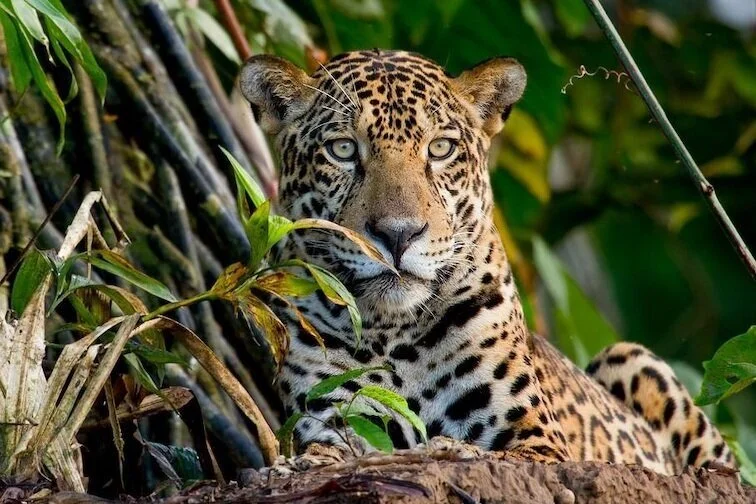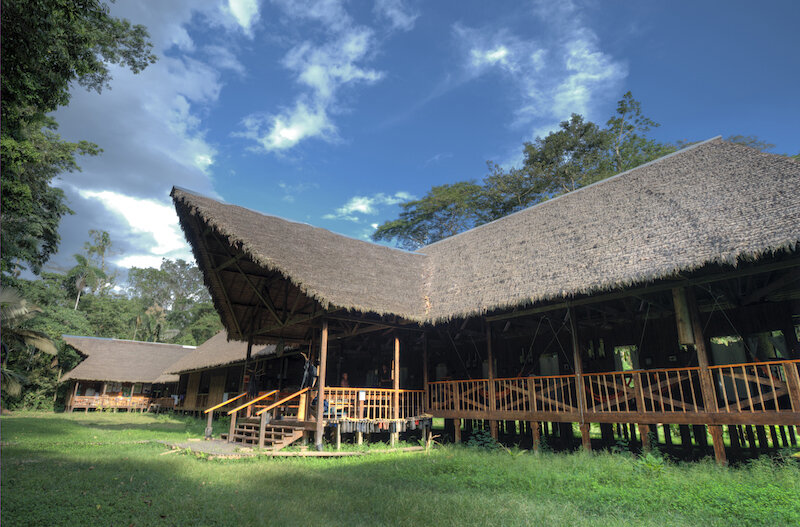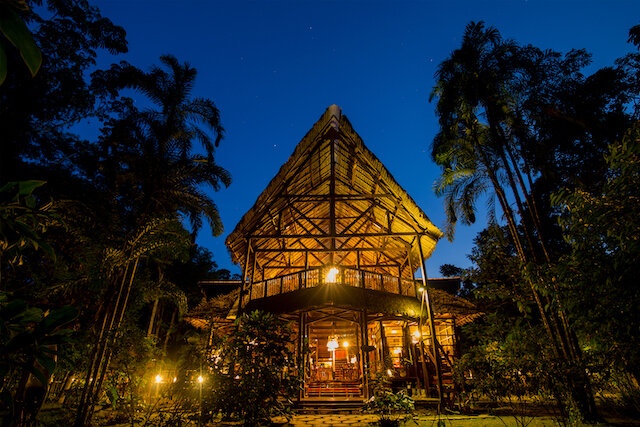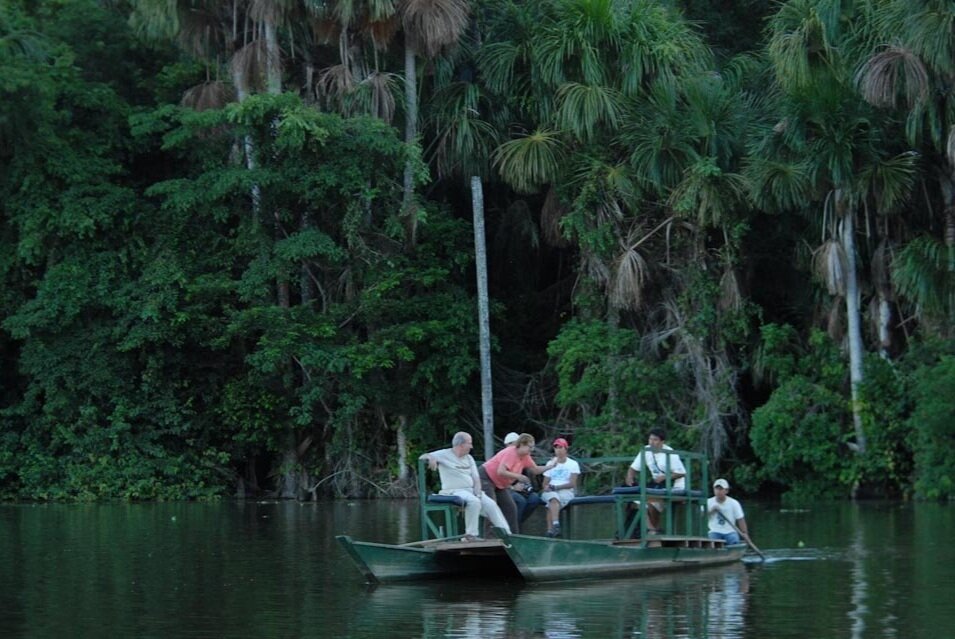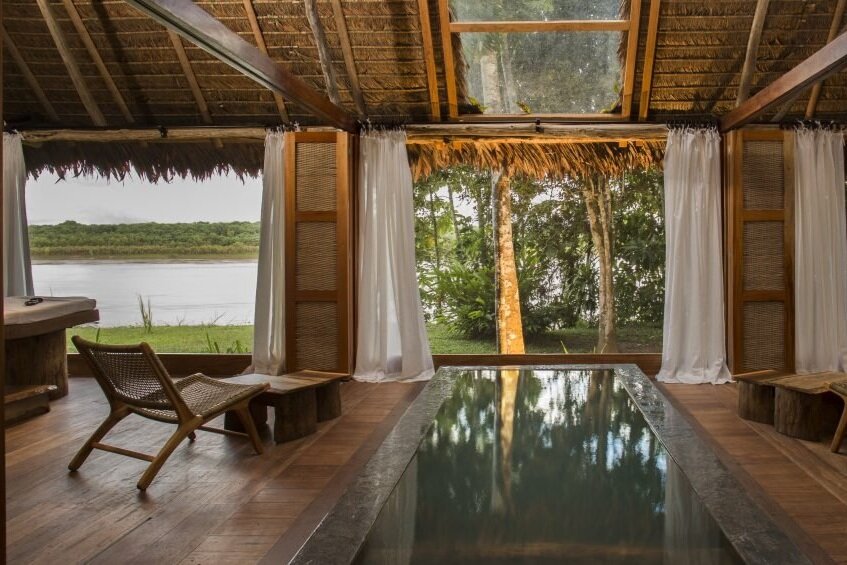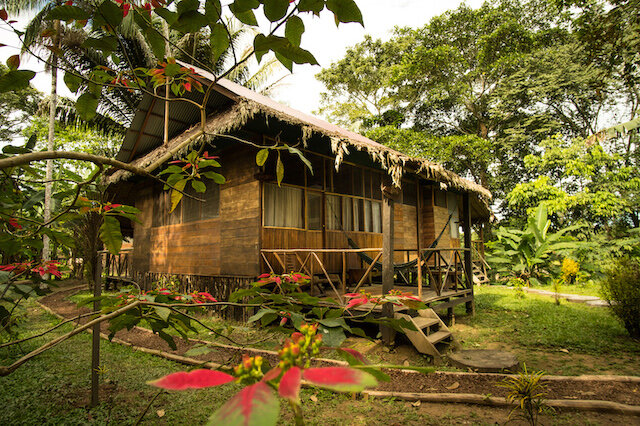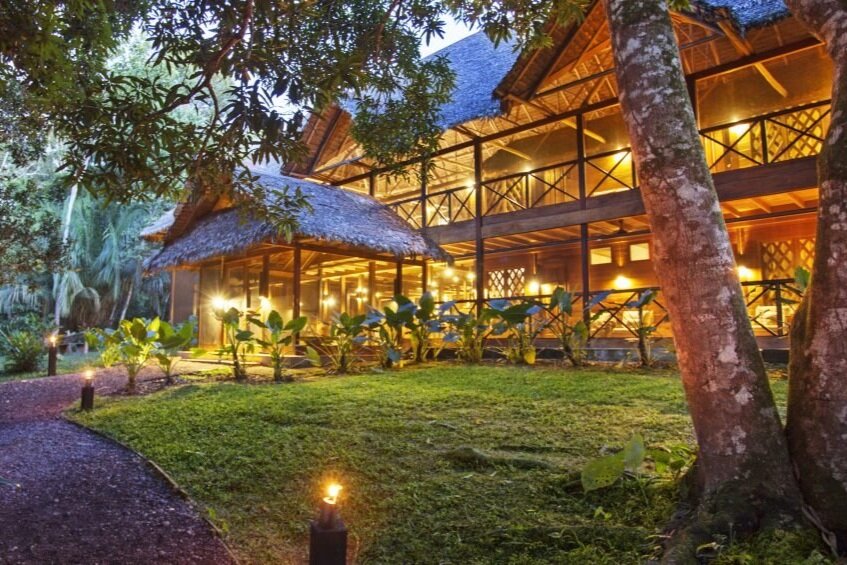Amazon Lodges In Southern Peru
Southern Peru’s Amazon ecology shows distinctions to the north, with savannah & no flooded forest.
Excellent eco-lodges accessed from Puerto Maldonado in Madre de Dios department.
Famous for kolpas, attracting beautiful macaws & parrots, and sightings of jaguars.
Superb birding & mammals to be found in cloud forest of Manu, which stretches high into Andes.
Inland from the Andes is the vast Peruvian selva or Amazon region, every bit as wild and rugged as the rainforest of neighbouring Brazil and Ecuador.
Although people tend to think of the selva as one huge, homogenous region, there are several sub-regions with distinct variations in flora, fauna, climate and geomorphic characteristics.
The southern Amazon (around Puerto Maldonado) tends to be drier, marked by foothills that ramble down from the Andes and vast tracts of forest that are rarely flooded.
By contrast, the northern rainforest gets much more precipitation and runoff, with some areas underwater for six months or more.
Like the rest of Amazonia, Peru’s southern rainforest is under threat from many different factors including: logging; gold mining; oil and gas exploration; hunting; ranching; and ever-increasing human habitation.
But the Peruvian government has taken steps to protect large swathes of forest within the confines of large government sanctuaries like Manu National Park, Tambopata National Reserve and Bahuaja-Sonene National Park.
Several great rivers dominate these reserves: the Madre de Dios, the Malinowski, the Candamo, the Heath and the Tambopata. They eventually all merge and flow into the Amazon River proper, which continues all the way to the Atlantic Ocean in far-eastern Brazil.
Numerous eco-lodges are to be found along the banks of these rivers, or beside ox-bow lakes which have been formed by a change in the rivers’ direction.
Here are some of our favourites:
You can read about the Amazon lodge options in Northern Peru here.

